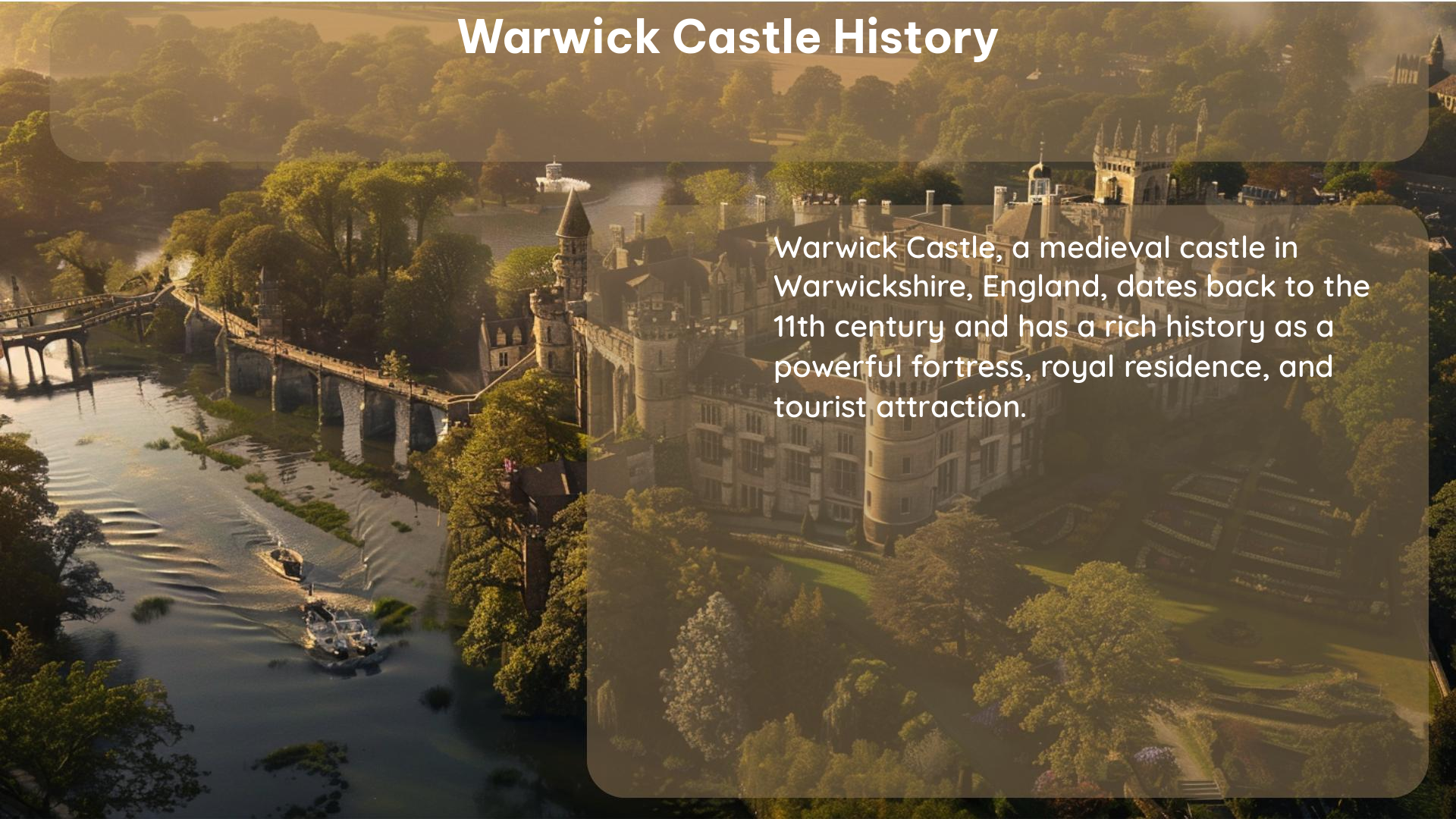Warwick Castle, a magnificent medieval fortress nestled in the heart of Warwickshire, England, boasts a rich and captivating history that spans over 1,100 years. From its humble beginnings as a wooden motte-and-bailey fortification built by William the Conqueror in 1068 to its transformation into a grand stately home, this castle has witnessed the ebb and flow of power, intrigue, and cultural evolution.
The Norman Conquest and the Birth of Warwick Castle
In the aftermath of the Norman Conquest in 1066, William the Conqueror recognized the strategic importance of the Midlands region and ordered the construction of a wooden motte-and-bailey castle at Warwick. This fortification, perched atop a sandstone bluff overlooking the River Avon, served as a crucial stronghold in safeguarding the region against potential rebellion.
The Transition to Stone and the Influential Families

Over the course of the 12th century, the wooden castle was gradually rebuilt in stone, transforming it into a more formidable and enduring structure. The castle’s ownership passed through the hands of several influential families, each leaving their mark on the castle’s architecture and history.
The Beaumonts and the Beauchamps
The Beaumont family, who held the castle in the 12th century, were the first to undertake significant stone construction, laying the foundations for the castle’s impressive keep and curtain walls. In the 13th and 14th centuries, the Beauchamp family, one of the most powerful noble families in medieval England, further expanded and fortified the castle, making it a true baronial stronghold.
The Nevilles and the Dudleys
During the 15th century, the castle came under the control of the Neville family, who played a prominent role in the Wars of the Roses. In the 16th century, the Dudley family, led by the infamous Robert Dudley, Earl of Leicester, made significant renovations and additions to the castle, transforming it into a grand Renaissance-style residence.
The Grevilles and the Tussauds Group
In the early 17th century, the castle was granted to Sir Fulke Greville, who converted it into a stately home, blending its medieval architecture with more modern, civilized interiors. The Greville family owned the castle until 1978, when it was purchased by the Tussauds Group, the renowned wax museum company. In 2007, the castle was sold to Nick Leslau’s investment firm, Prestbury Group, under a sale and leaseback agreement, with Merlin Entertainments continuing to operate the site.
Warwick Castle Today: A Captivating Destination
Today, Warwick Castle stands as a testament to its rich history, offering visitors a unique opportunity to step back in time and explore its captivating past. The castle’s interiors, which have been meticulously preserved and restored, showcase the opulence and grandeur of its various eras, from the medieval keep to the elegant staterooms.
Attractions and Experiences
Visitors to Warwick Castle can engage in a wide range of activities and attractions, including:
- Guided tours of the castle’s interior and grounds
- Thrilling live-action shows and demonstrations, such as the “Trebuchet Fireball” and “Bowman” performances
- Immersive experiences, like the “Dungeons” and “Kingmaker” exhibits, which bring the castle’s history to life
- Outdoor activities, including the Horrible Histories maze, the Peacock Garden, and the Trebuchet Firing Range
- Overnight stays in the castle’s medieval-themed lodges or glamping tents, allowing visitors to truly immerse themselves in the castle’s historic ambiance
A Timeless Treasure
Warwick Castle’s enduring legacy as a captivating historical site and a popular tourist destination is a testament to its enduring significance in British history. With over 1,100 years of stories to tell, this magnificent castle continues to captivate and inspire visitors from around the world, offering a unique and unforgettable glimpse into the past.
References:
– Warwick Castle Official Website
– Wikipedia – Warwick Castle
– Britannica – Warwick Castle
– History Hit – Warwick Castle
